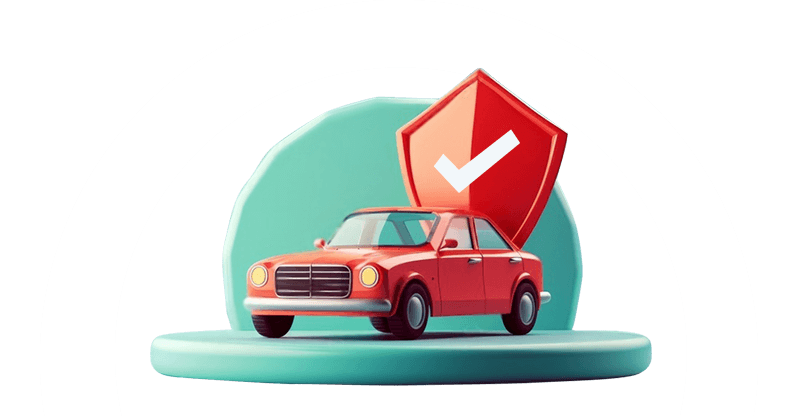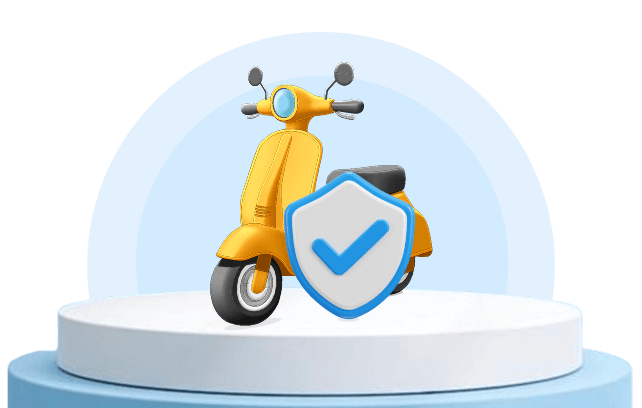
You have brought your dream car home, and along with that, you have acquired all the required documents like vehicle registration papers, OR/CR, driver’s license, and car insurance policy. If you haven’t, head to your nearest LTO to get the vehicle registered and start the licensing process. As for the license, we’d suggest you read our previous blog on ‘where to get car insurance in the Philippines’. It talks in detail about the three common avenues to get insurance, i.e. banks, dealers, and brokers; read it and head to the one you find will best fulfil your car insurance needs. But what’s next?
After securing a car insurance policy of choice, it is your responsibility to keep the policy active to enjoy the protection and financial coverage. How to do that, you ask? By paying the car insurance premium on time.
Yes, paying the car insurance premium as per schedule is crucial for maintaining continuous coverage and avoiding penalties. In the Philippines, policyholders have several convenient payment modes at their disposal, which makes it easier for them to settle the premium.
Furthermore, with the rise of digital payment systems in the country, Filipino policyholders can pay the premium from the comfort of their home/office and that too via multiple channels. All this ensures that you never miss a premium payment, and your vehicle remains insured.
In this article, we’ll be discussing all about payment of insurance premiums - importance, methods, advantages of digital payment, and more. So, let’s get started.
Car insurance payment - Basic understanding
Every Filipino car owner needs to understand the intricacies of car insurance payments. And do not make the mistake of relying on all the information from your friends, family, or peers, as car insurance premium payments are not one-size-fits-all. As premiums have varied payment frequencies, payment deadlines, and grace periods. Further, the amount is also influenced by several factors. Therefore, it is better to do your study and plan your finances accordingly.
Let us have a look at some of the basics of car insurance payments -
Premium payment frequency
Insurance providers in the Philippines offer policies with varying frequencies to cater to the needs of their clients. Policyholders must choose between annual, semiannual, quarterly, or monthly payments. Remember that the frequency you choose can impact your financial planning and budgeting.
Factors influencing the premium amount
Several factors can influence your car insurance premium amount, including the type and value of your vehicle, your driver’s age and history, and your location. The table below shows how these factors have an impact on the premium -
|
Vehicle type |
More expensive or high-performance vehicles typically cost more to insure, resulting in higher premiums. |
|
Driver’s age |
The more experienced the drivers, the lower the premium. |
|
Driver’s history |
A clean driving record can lower your premium, while past claims or violations may lead to a higher premium. |
|
Location |
Urban areas often have higher premiums due to the high risk of accident or collision. |
Premium payment deadline
Usually, insurance providers specify a due date for premium payments to their clients, which, if missed, results in a lapse of coverage. Fortunately, many insurers offer a grace period, typically ranging from a few days to a week, allowing you to make your payment past due without penalty.
 Photo from Freepik
Photo from FreepikCar insurance payment - Importance of timely payment
Wanna enjoy the continuous insurance coverage and avoid legal issues? Then, it is crucial to make timely premium payments to your insurer. Remember, car insurance is not just a tool offering you financial protection, but it is a legal requirement for all vehicle owners in the Philippines.
Cancellation & legal penalties
The importance of timely premium payments can be understood from the severe consequences of missing a scheduled payment, i.e., policy cancellation and legal penalties. If a policy gets cancelled due to non-payment, the policyholder will find themselves uninsured and vulnerable to financial risks in the event of an accident.
Enjoy continuous coverage
Policyholders who never fail to make premium payments enjoy continuous coverage. Meaning they remain against financial losses due to accidents or other damages. Further, it also helps avoid legal issues and penalties associated with driving an uninsured vehicle.
Legal requirement
In the Philippines, motor vehicle insurance is compulsory. The LTO requires every vehicle owner to have at least a Compulsory Third Party Liability (CTPL) insurance to register their vehicles.
Car insurance payment options
There are two major ways to pay car insurance premiums in the Philippines - traditional and online. Both again with multiple options, which we’ll be discussing in detail here.
Traditional payment options
Over-the-counter - This one is the most straightforward method to pay a premium. Just head to the insurance provider's office, directly interact with the insurance representative and make the payment. Here you can also ask questions and clarify any doubts about the policy.
Bank deposit & transfer - Policyholders can deposit cash directly into the insurance company's bank account or transfer funds electronically. It is convenient for those who already have online banking services.
 Photo from Freepik
Photo from FreepikPayment centres - Payment centres like Bayad Centres and 7-Eleven are also popular for making car insurance payments. Such centres are easy to find, and many have extended working hours, making them super convenient for policyholders.
Key features of traditional payment
- The processing time for traditional payment methods can vary. For instance, while the payment made over the counter gets processed immediately, bank deposits may take a day or two to get cleared. Payment centres are also known to process the payment within the same day or the next business day.
- To make payment via traditional means, policyholders need to provide their policy number and other valid government IDs.
Online premium payment options
Online banking - This particular tool has made handling premium payments so much easier. You can make the payment from anywhere, at any time. Many banks in the Philippines offer insurance payment services by providing a secure platform where all you have to do is log in and make a payment.
 Photo from Freepik
Photo from FreepikGCash - One of the leading mobile payment apps in the country, GCash has integrated with many insurance providers like Standard Insurance, Fortune General Insurance Corporation, FPG Insurance, Malayan Insurance Co., Inc., OONA Insurance, MoneyHero Insurance Brokerage, and Pioneer Insurance & Surety Corp., thus allowing users to pay their car insurance premiums seamlessly, in a hassle-free manner, eliminating all physical visits to banks or offices.
PayMaya - It is another popular mobile payment app that enables users to pay their car insurance premiums. The entire payment process is pretty simple, all thanks to its user-friendly interface makes it easy for policyholders to manage their payments on the go.
Coins - Another great option to pay car insurance premiums online is through Coins mobile pay. It offers a secure platform and supports many payment methods.
Insurance company mobile apps - Many insurance companies in the Philippines these days have their apps that allow policyholders to manage their policy and make payments.
Other options to pay the premium
Credit card - In addition to traditional and online payment modes, a policyholder can also use his/her credit card to pay for car insurance. This cashless method of payment is accepted by most providers via Visa or Mastercard.
Check payment - For those who aren’t comfortable with paying a large amount of cash, issuing a post-dated check is a great alternative to paying a premium.
 Photo from Freepik
Photo from FreepikATM banking - Another great way to pay your premium is via your debit or ATM card. It is convenient and a great alternative to mobile banking.
Bottom line
To ensure an uninterrupted insurance coverage, it is essential for a policyholder to choose an optimum payment method. Insurance providers in the Philippines offer various payment options to their clients, including online banking, mobile payment apps, e-wallet solutions, and more. However, while choosing one of the listed payment avenues, make sure to consider factors like processing time, security, and convenience. Also, make sure to inquire about the transaction fees associated with each payment method, as some insurers charge additional fees for certain payment methods, while others may offer discounts for using specific channels.
Remember that choosing the right payment method plays a crucial role in ensuring timely payments and continued coverage without hassle.
FAQs
Q1. What are the most convenient options to pay car insurance premiums in the Philippines?
Ans. The most convenient ways to pay for car insurance in the Philippines include online banking, mobile payment apps, e-wallet solutions, and credit and debit card payments.
Q2. Is there any fee associated with online insurance premium payment?
Ans. It depends, for instance, while online banking or mobile payment apps are mostly fee-free, payment options like credit/debit cards may incur certain transaction fees.
Q3. Is it possible to pay my car insurance premium via credit card?
Ans. Absolutely yes. Many car insurance providers in the Philippines accept credit card payments for insurance premiums.
Q4. Is it possible to set up automatic payments for my car insurance premium?
Ans. Usually, you can. However, for that to work, you need to contact your insurer and arrange for auto-debit payments.
Q5. What if I miss a premium payment?
Ans. Missing a premium payment may result in the cancellation of the policy or the suspension of coverage.
Q6. Is it possible to change the premium payment method?
Ans. Yes, you can usually change your payment method by contacting your insurance provider.
Q7. Are there any discounts available for using a specific payment method to pay the premium?
Ans. It all depends on the insurance providers, as some offer discounts or promotions for using certain payment methods, such as e-wallets or mobile payment apps.
Q8. How long does it take for my premium payment to be processed?
Ans. The processing time varies depending on the payment method. Online banking and mobile payment apps are usually processed in real-time, while bank transfers or post-dated checks may take longer.
Also Read: Car insurance claims in the Philippines: Common scenarios and claim types explained







